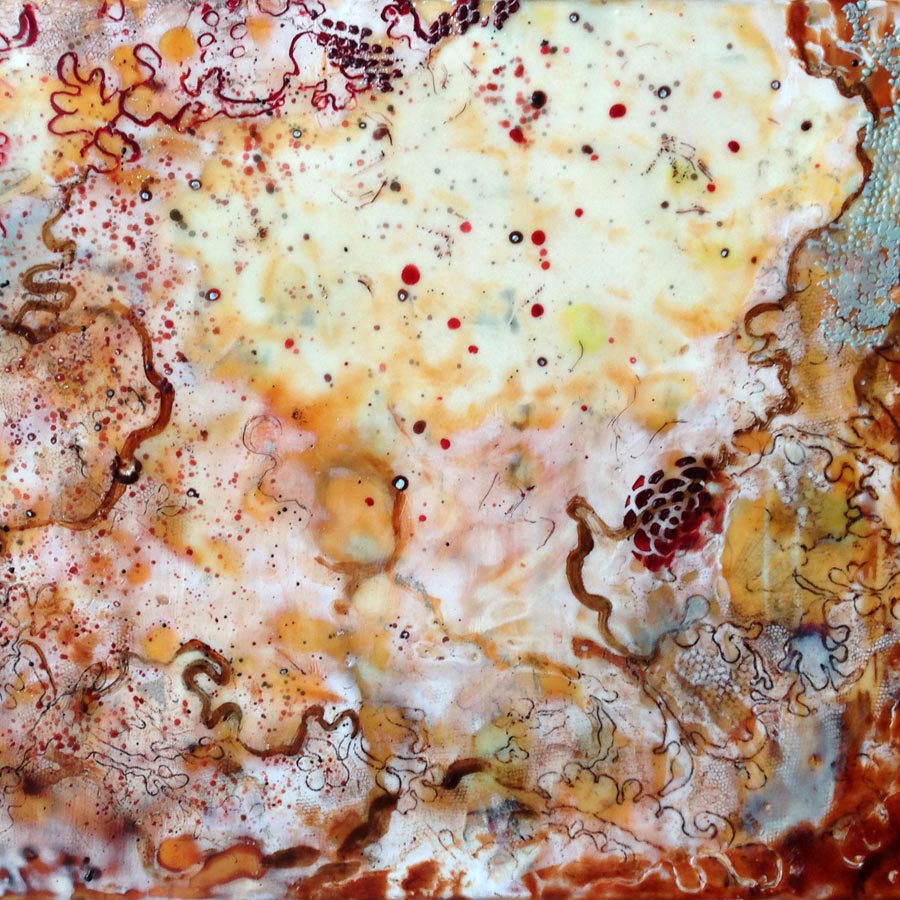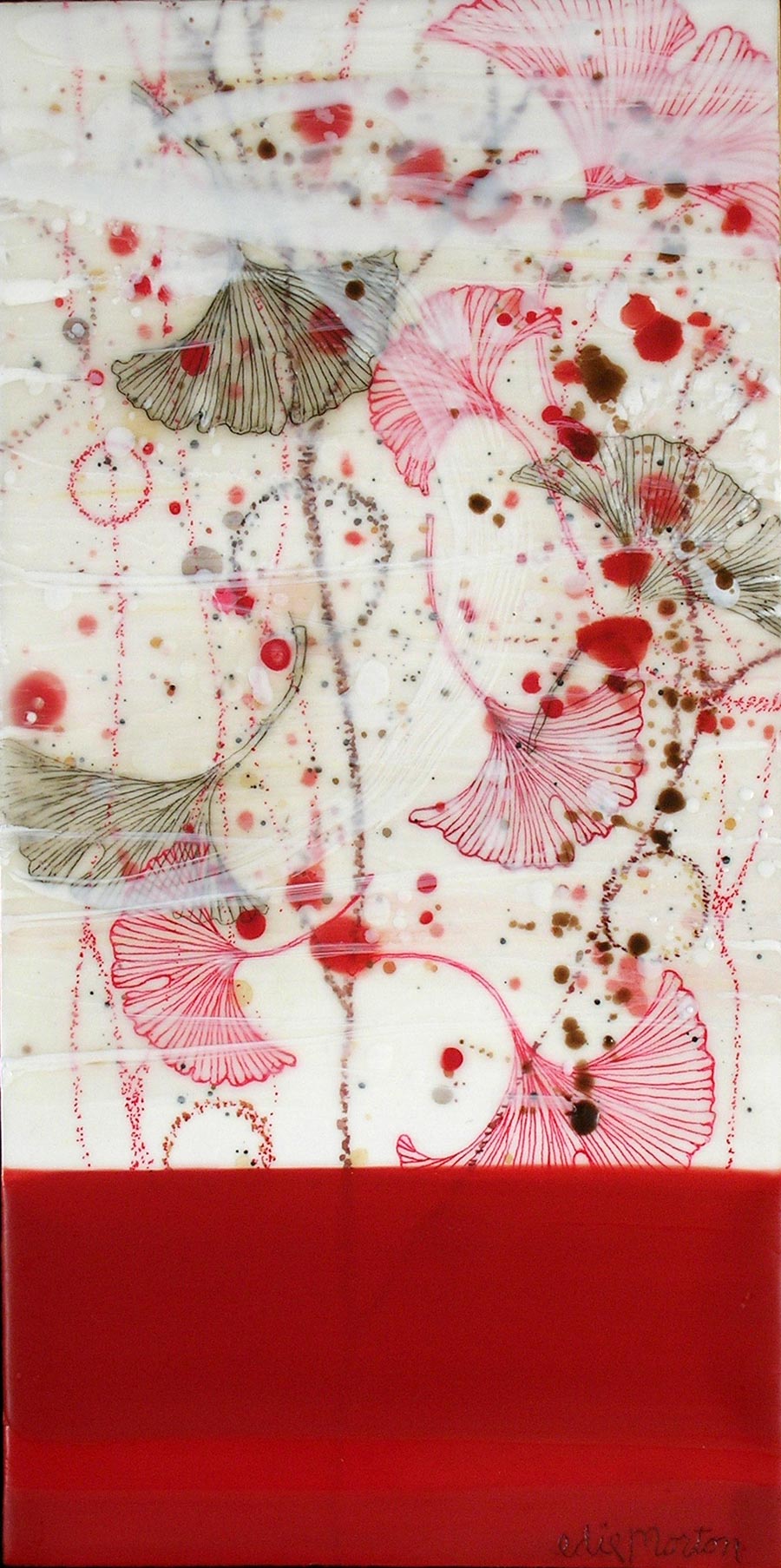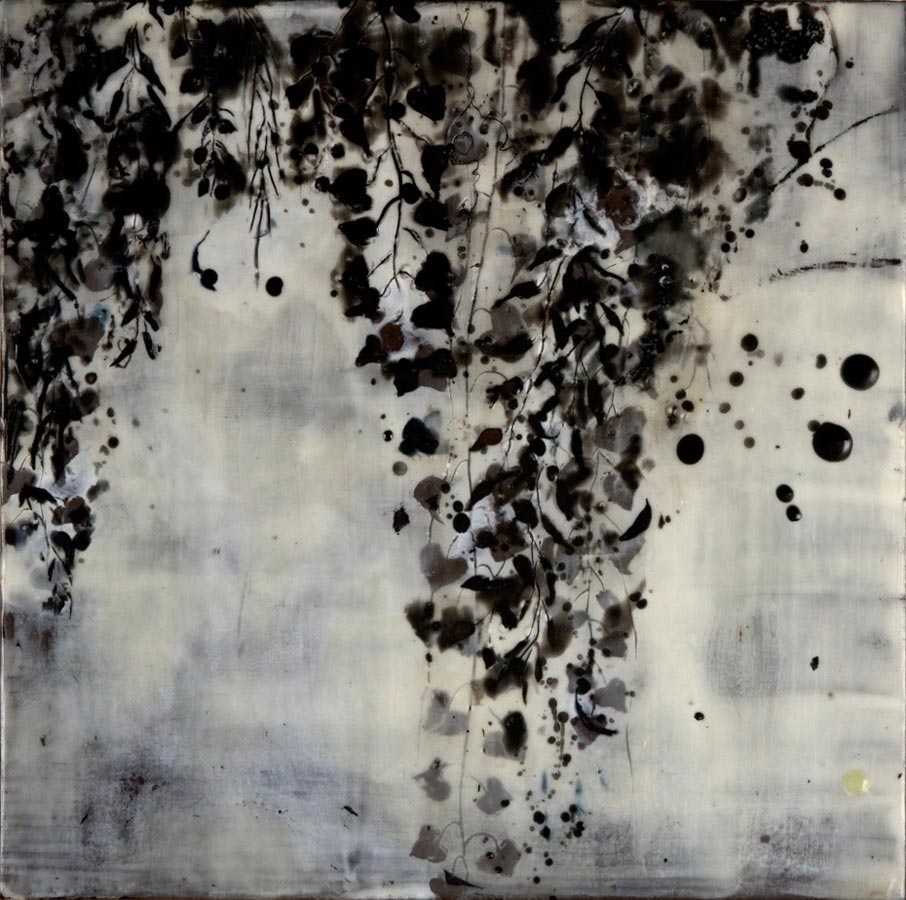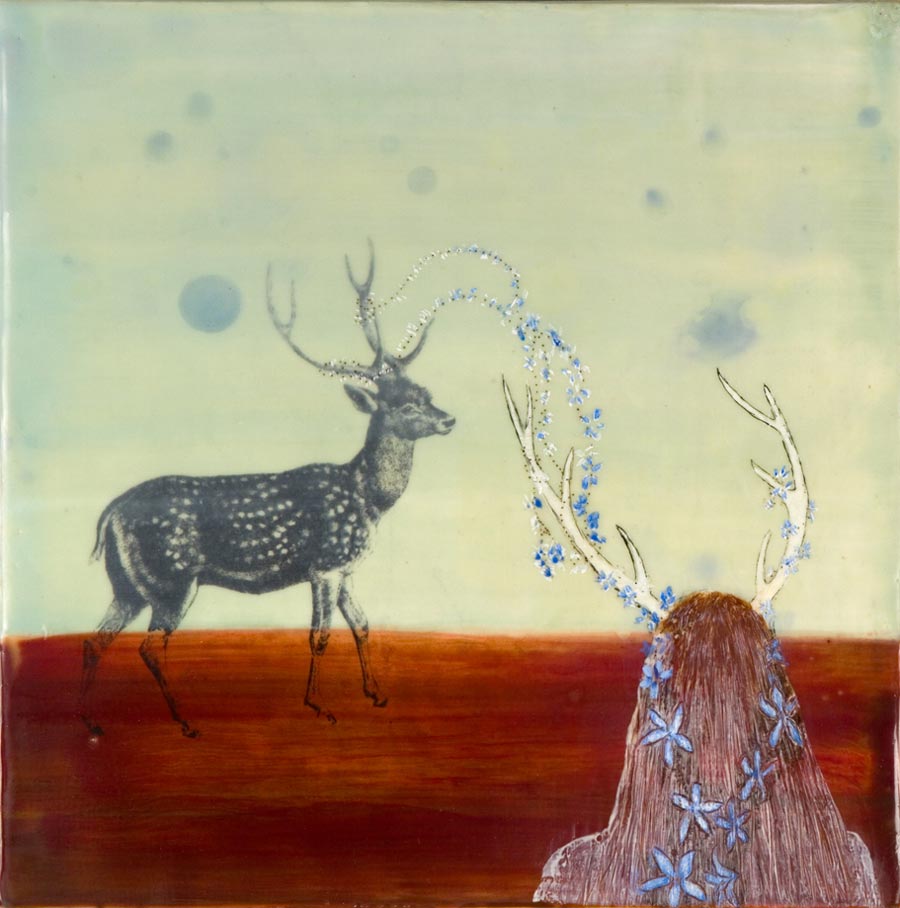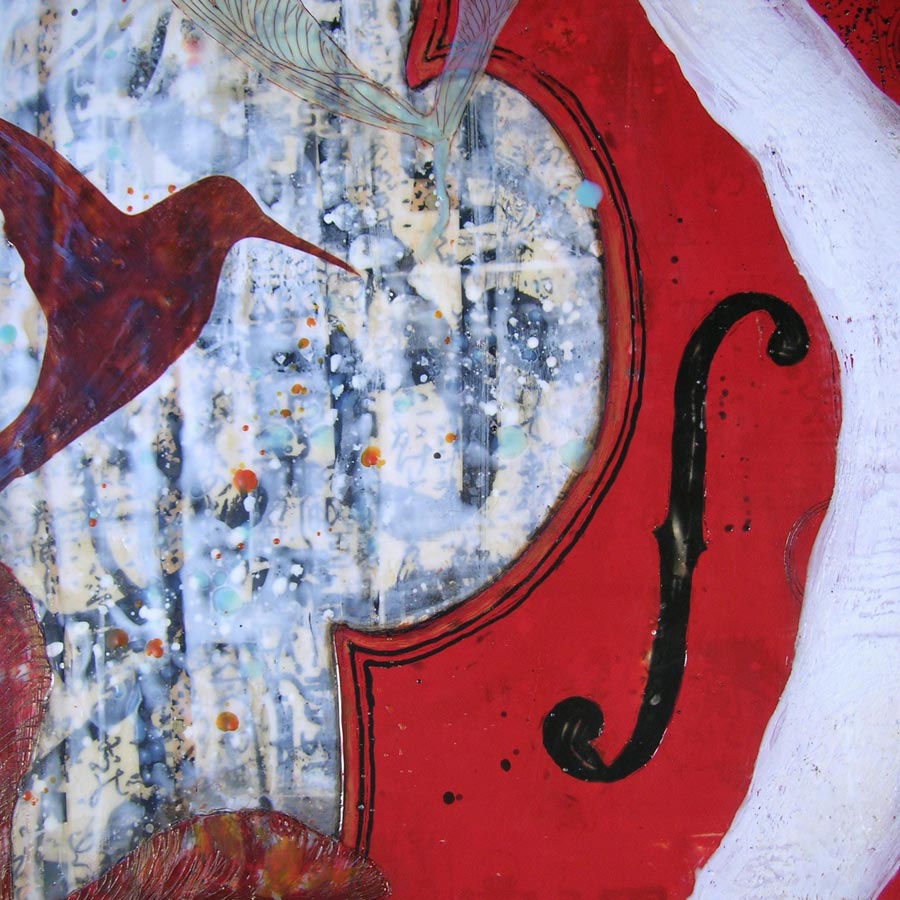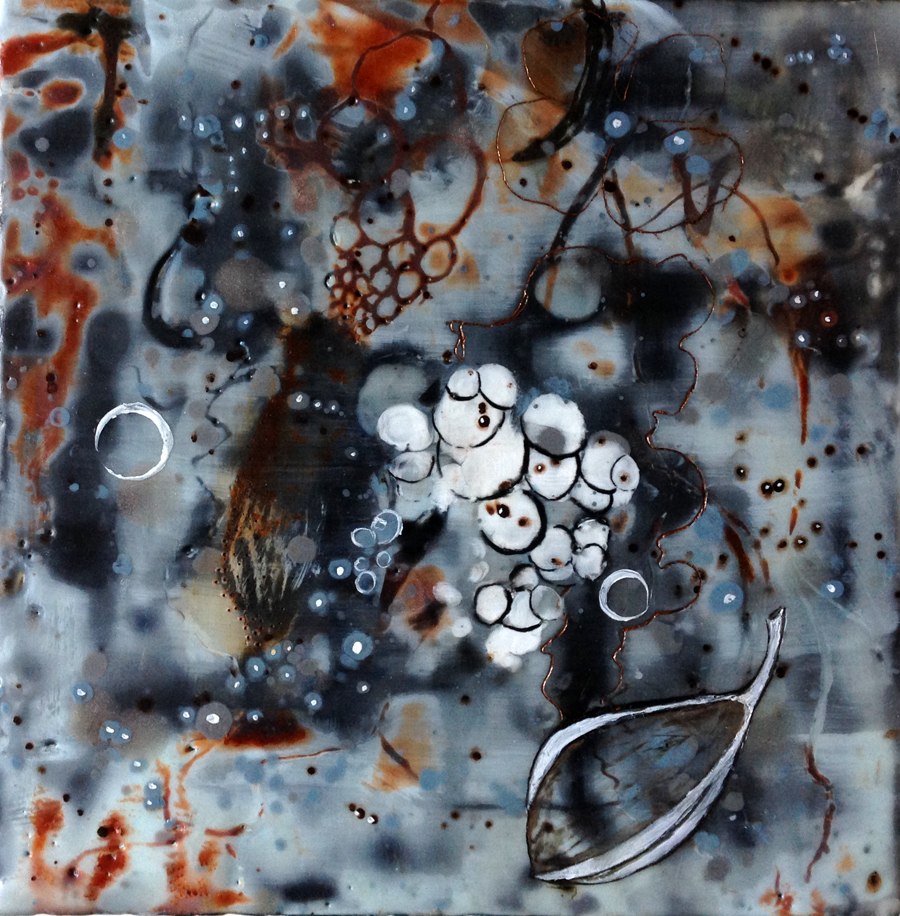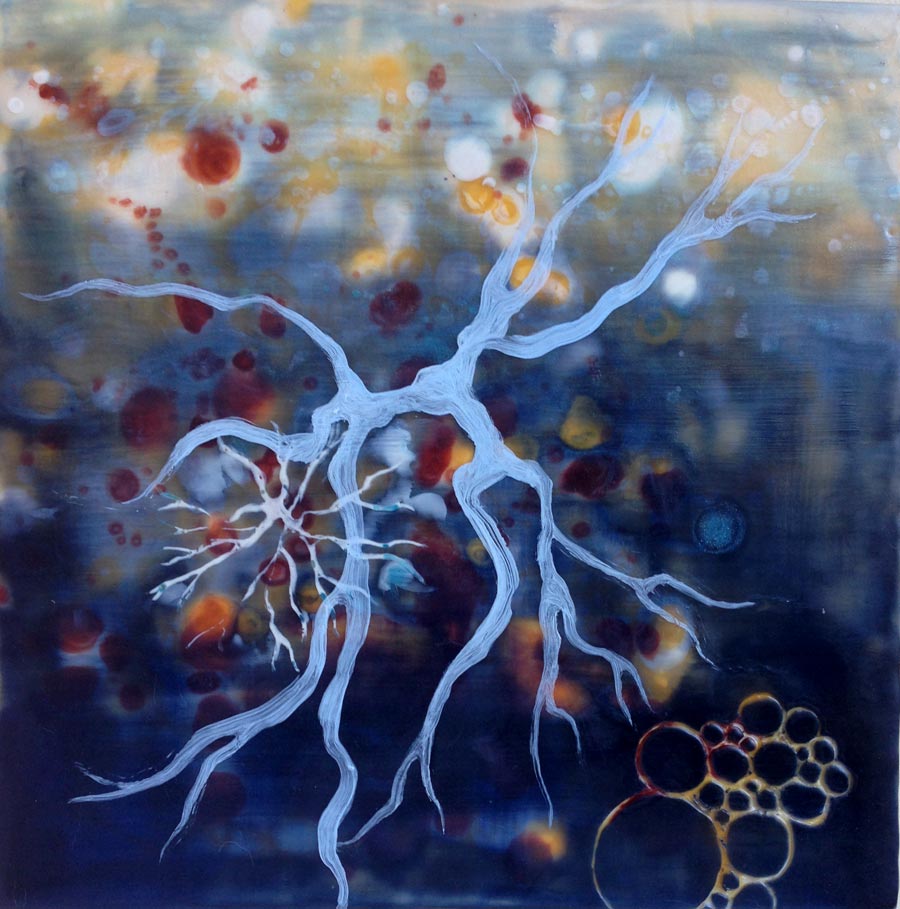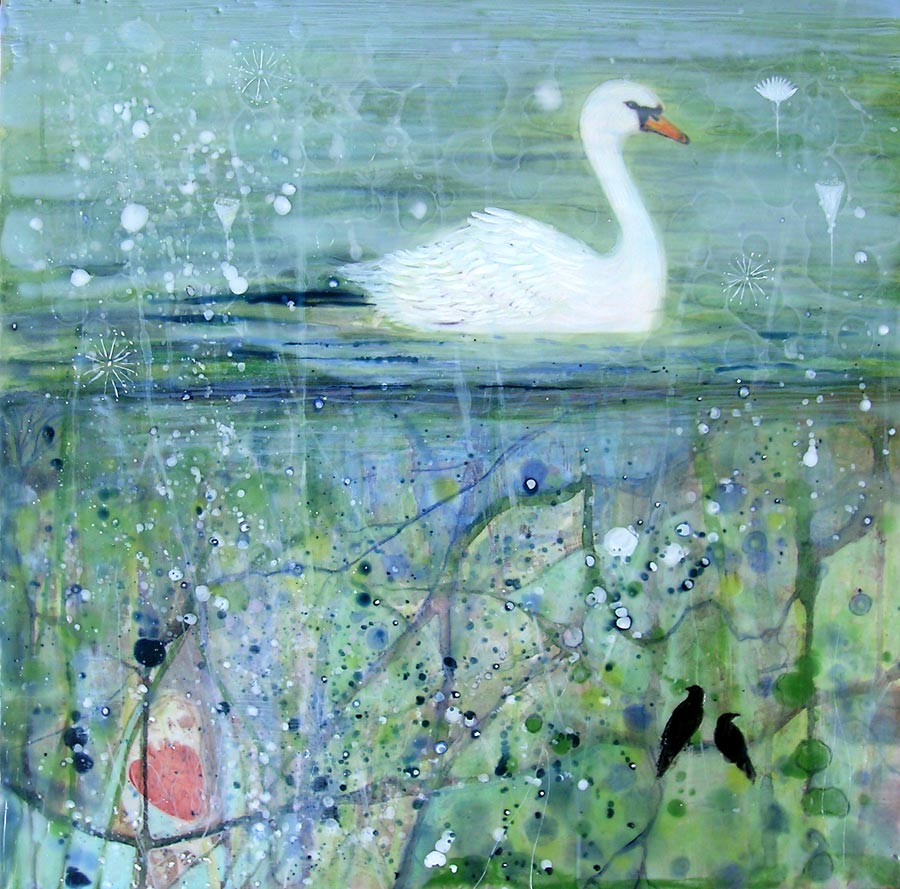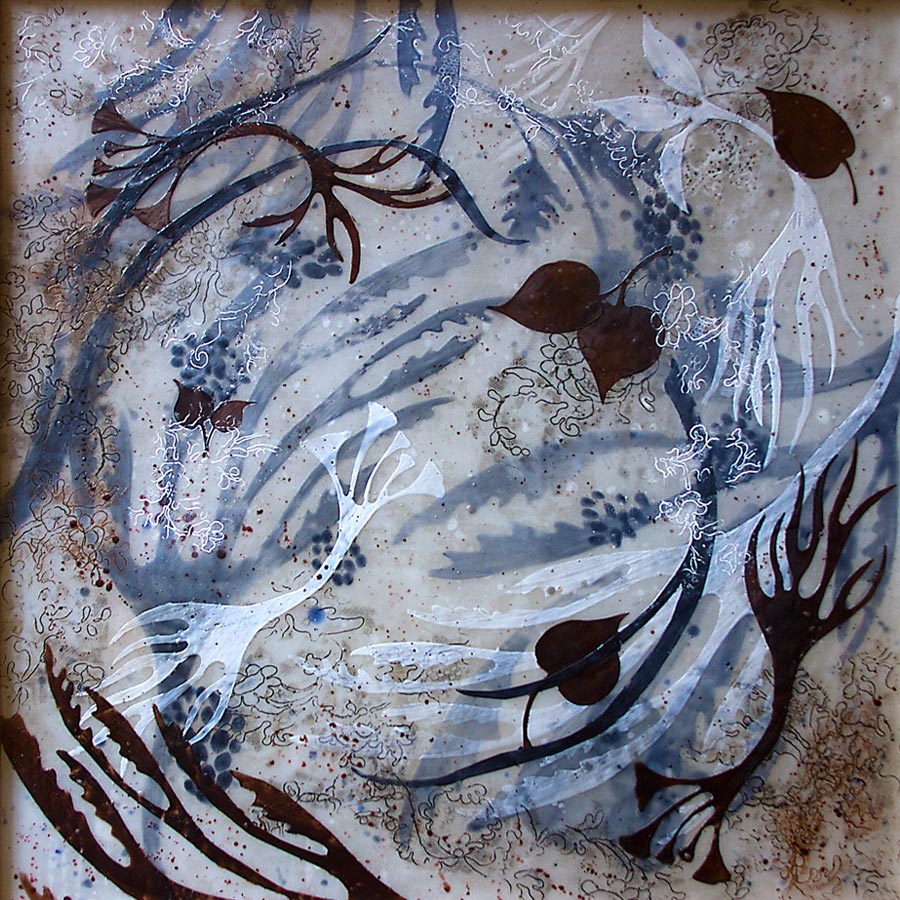The origins of encaustic painting are found in ancient Greece where ship builders used beeswax to waterproof and caulk their vessels. Pigmenting the wax gave rise to the decorating of warships. In 5th century B.C. Greek artists took this medium to new horizons creating portraits and incorporating it as an embellishment to ceramic and marble sculpture. It eventually became a lost art after the fall of the Roman empire and replaced with tempera paint which was cheaper and less demanding to work with.
Encaustic (enkaustikos) means “to heat or to fuse”. Heat is used throughout the process as each stroke or layer is fused to the next. Encaustic is quite versatile in that it can act as a paint or sculpting medium. It can be polished to a high gloss, carved, scraped, layered, sculpted, textured, and combined with oil.
I am drawn to this medium for its properties of lush seduction, translucency and interaction with light which magnifies it’s optical depth. Layered and fused with a torch, this alchemic medium requires a dance between order and Zen mind. A sense of order is critical when building numerous layers (50+) incorporating specific techniques layered from the bottom up. Often control towards a specific result can vanish within a moment due to the power of fire. Patience, un-attachment and mindfulness are essential.
